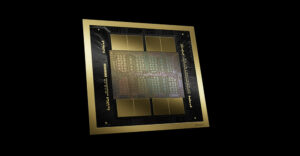
2005 will see the next big battle for the home. The concept of the digital hub is slowly becoming reality, and both TiVo and Microsoft are making a run for the gold.
ReplayTV is all but gone. Apple seems to have taken a pass on the entire concept. Sony is a player but has never been able to gain the scale necessary to drive this market, even though it has one of the most compelling solutions today in the VIAO Type X. The third parties, largely from Asia and led by Apex, have yet to emerge as anything more than a curiosity.
But as consumers gobble up digital still and movie cameras by the hundreds of thousands, they are becoming aware of the need to share their digital memories. The iPod is the product of the hour, driving a substantial interest in digital music. But the iPod is still largely a personal device, while, at home, music is generally a shared experience. Finally, the benefits of time-shifted television — and the fact that this remains the closest most can come to on-demand programming — is slowly (more slowly than expected) driving interest in this technology.
Three Major Players
The three major players in 2004 are two companies and an industry. The companies are Microsoft and TiVo, and the industry is digital satellite/cable. And all three have compelling advantages that we’ll talk about in turn.
There are four media types and five platforms that have to be embraced as this product set matures. The four media types are digital music, video, still pictures and electronic games. The five platforms are the personal computer, personal wearable, automotive, home stereo component and home stereo built-in.
In addition, both protected and unprotected media has to be addressed for all media types. Digital rights management (DRM) has to work, and the wining platform is the one that will make it seamless.
TiVo
TiVo is the weakest but arguable furthest along in terms of market penetration. Vastly smaller than the other two and with limited authority, it was also the first with a solution that a large number of people purchased and used. Built on embedded Linux done right — embedded products should be invisible to the user — the product has a simple interface, is scalable (with the current software release), and is both easy to set up and relatively reliable.
TiVo is not without problems, though. Its most visible partner, DirecTV, is planning on moving to its own platform in 2005, and its market-leading twin-tuner set-top box doesn’t use the TiVo 2 feature set and so isn’t a true digital hub (because it won’t stream music or pictures). The TiVo 2 products have only one turner each, and you have to add additional products to be able to both watch a current program and tape another or tape two programs at once. You can stack only two TiVos in one place because the remotes can’t differentiate between more than that, forcing you to place others in other rooms of the home. Because you can manage all of the programming from one TiVo 2, this isn’t as hard as it looks, but it does add to the complexity of the solution.
The more TiVos you have, the higher the probability that one will fry a hard drive, and there is no clear way to back up the programming. And there is no mobile solution, so you can’t take your programming on the road. TiVo can do HD TV, but that product is nearly 10 times as expensive as a basic one and more difficult to set up. TiVos don’t have digital tuners, and even with HD TV they have to pull from antiquated TV antennas.
TiVo has had a problem achieving profitability, and the trend by third parties has been away from and not towards this platform. That reduces TiVo’s chances of success
2005 is the make-or-break year for the company. This is when it will deal with the mobile aspects of the product and see if users will tolerate the banner ads the company has had to implement to appease the networks. TiVo can still pull this out because it has a loyal base of customers and remains the easiest to set up and use. But the clock is ticking, and the changes that are coming from competitors only make TiVo’s path more difficult.
Microsoft Media Center PC
Microsoft is the heavyweight of the broadcast independent vendors, and in 2004 it made its presence felt with the most capable platform currently on the market. Much closer to the concept of a true digital hub, the third-generation Media Center PC can handle three analog tuners, two for regular TV and one for HD. It is upgradeable, and you can easily back it up with USB 2 drives. The user interface is as good as TiVo’s, and the handling of albums, pictures and home movies is better.
This year the product rolled with media extenders that move the programming around the home using wired and wireless networks. In addition, a product called the Personal Media Center also came to market as an early evolution of the iPod — showcasing, perhaps, the eventual demise of the music-only portable hard drive music player segment. It also is extensible, and third parties lined up to provide alternative music services. Virtually every third-party music player, both hard drive and flash-based (including the iPod, thanks to HP), was made to work with this revitalized product. Even the Xbox was brought into the family. By every measure it is the most broadly supported and complete platform in the class.
But it isn’t perfect.
In 2004 Microsoft brought out a $14 million marketing program that was — when compared to programs from Apple, Dell and even HP — a complete waste of money. The platform still resides on top of a full Windows implementation, and it remains too close to a PC and too far from an appliance in a market that found even the TiVo, which is an appliance, too intimidating. The extenders, which should cost close to $100 based on TiVo pricing, list for nearly $300. And with the exception of HP and Niveus, who took very good care of their customers, there was no upgrade path from the older version of the product, which undoubtedly alienated about half of the first two waves of early adopters. Right now HP owns this product set with the strongest line and most consumer-friendly policy.
Microsoft has been unable to deal with digital content, either, and even though it supports HD content, there currently isn’t a single media center from a major brand that has an HD tuner. (Niveus is also offering a Media Center with HD.) The TV interface isn’t as advanced as TiVo’s, lacking any predictive capability or an easy way to avoid reruns. Most of the products run too hot or are too noisy.
Over-promising, under-delivering and abandoning an installed base are typically not good things for an emerging platform. Even though MS clearly has a marketing budget that TiVo can’t touch, its execution in this area has been a historic problem, as demonstrated again this year.
2005 will bring the second generation of the Portable Media Center, which should come with more compelling designs, a lower price and a better user interface. (Currently you can’t manage your programs from the device, and online content has been problematic.) An automotive extender product is expected in 2005, making this the first platform to fully embrace all usage models. Extenders are expected to drop below $200 next year as well, and HD will clearly become more attractive as HDMI support and HD tuners embrace the platform. Even the Xbox 2 is expected to step in and be a more complete part of this solution in 2005-2006.
Like TiVo, Microsoft needs to be able to work with digital programming and to build demand. If it can’t, a late arriving third player, or one of the others called out in this article, will own the market.
The Cable/DSS-Based Power Player
Companies like Digeo are working with cable companies and DirecTV to provide an alternative. In trial now, these products are wrapped with services and are subsidized by the cable firms, making the cost of entry trivial, although the overall cost of ownership may actually be higher than with TiVo or Microsoft. Expected to be easier to use and to match most of the features of both of the other two products, this platform has all of the advantages of vaporware.
There is little consistency, however, between these efforts and the cable and satellite companies, who have less than a stellar reputation when it comes to customer satisfaction and complex technology. (Most still avoid the digital set-top box option, which beat both the TiVo and the Media Center to market). These companies are not known for being extensible, and the likelihood they will get portable multi-media right in the next several years is low. The solutions are expected to vary widely from provider to provider, and nothing close to a single standard has emerged. That makes it incredibly unlikely that third parties will flock to support this solution with their own products.
Both TiVo and Microsoft have left a huge opportunity for the cable and satellite vendors to steal this market. But given satellite and cable’s history, it’s unlikely they’ll be successful.
And the Winner Is…
Microsoft has the resources, the partnerships, and the knowledge to make this work. It is, however, slow off the mark, which means that this is anyone’s game. There is even an outside chance that Sony or — even more unlikely — Apple could steal this market. 2005 should be a very interesting year for those of us that really want to experience the future of home, automotive and personal multi-media.
Rob Enderle, a TechNewsWorld columnist, is the Principal Analyst for the Enderle Group, a consultancy that focuses on personal technology products and trends.





















































